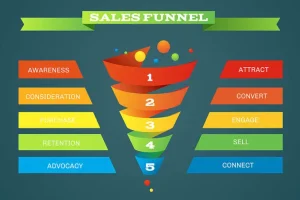
Startups face numerous risks during their early stages. This includes financial risks like securing funding, managing cash flows and reaching profitability.
Monitoring and reviewing risk assessments are vital in helping startups prepare for potential obstacles. This involves identifying risks, developing mitigation strategies, and determining their effects on business operations.
Quantitative methods
Effective risk management strategies can assist startups in meeting various challenges, including operational risks, market risks and strategic and compliance-related risks that can come from external or internal sources and threaten its success.
Startups can use various tools and methodologies, including brainstorming sessions, the Delphi method, SWOT analysis and expert interviews, to identify potential risks. These techniques help identify significant threats while developing plans to address them; additionally standardized documentation templates simplify recordkeeping while increasing transparency within an organization.
This paper uses interval-valued intuitionistic fuzzy sets to overcome fuzziness and uncertainty in risk assessment, using comprehensive professional scoring matrices normalized with decision makers weights for each risk criterion to rank live-streaming e-commerce platforms in terms of their ability to meet decision makers needs; the final result being a ranking list which can then be used to ascertain risk levels of each platform.
Qualitative methods
Risk identification is a crucial aspect of startup decision making. By using qualitative methods to ascertain probability and severity for each risk, startup leaders can prioritize their efforts at risk management. A freezer failure could cause significant financial loss and reputational harm while an unexpected natural disaster could devastate operations completely.
Next, assess each risk’s impact and create effective plans to mitigate them. One effective method for doing this may be running through various hypothetical scenarios – for instance, biotech startups which depend on freezers to store compound samples may consider what would happen if there was an unexpected power outage and they stopped functioning altogether.
Market landscapes are constantly shifting, so startups must constantly assess risks to stay ahead of the competition and avoid costly errors that could jeopardize their business.
Methods for analyzing financial data
Statistical analysis is an integral component of financial data analysis, serving to ensure results are meaningful rather than due to mere chance. Furthermore, statistical analysis provides a framework for understanding numerical data. Furthermore, its role is essential to creating an environment of data-driven decision making within any company.
There are multiple methods for analyzing financial data, including cross-sectional and trend analyses. These techniques enable comparisons across companies and time. One popular technique uses ratios to compare line items on financial statements more meaningfully without factoring size as a factor into comparisons.
Break-even analysis, capital budgeting and risk analysis are also forms of financial analysis used for strategic planning and decision making purposes. These techniques assess the cost-benefit analysis of long-term investments to aid strategic planning and decision making processes.
Methods for analyzing operational data
Startups face numerous obstacles, from financial uncertainties to operational hiccups. To be successful, startups need to understand these risks and implement appropriate mitigation strategies; yet at the same time recognize that risk assessments should be an ongoing process in order to anticipate challenges more proactively and respond more swiftly when necessary.
One method for identifying potential risks is conducting a survey among employees and stakeholders. Such an exercise may uncover risks not revealed during brainstorming sessions, while data collected can then be used to predict future risks and devise mitigation strategies that work.
One option for assessing probabilities is conducting a Monte Carlo simulation, with which one can ascertain the likelihood of various outcomes. Furthermore, conducting Failure Mode and Effect Analysis or risk heat mapping provides visual representations of risks which helps in decision-making processes. Finally, conducting a sensitivity analysis allows one to gauge how changes to key assumptions could have an impact on financial models.







